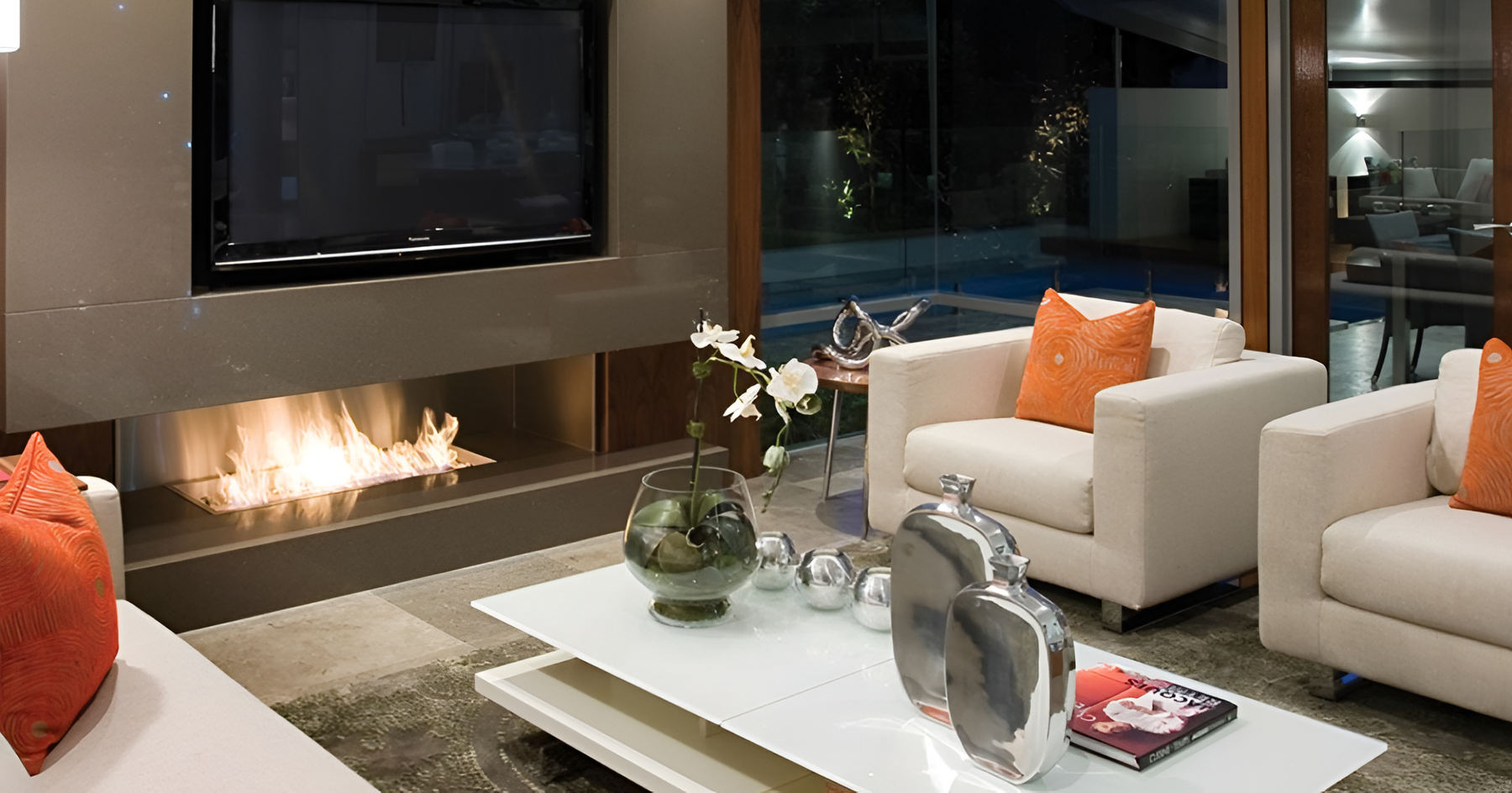
Safety of Indoor Bioethanol Fires Explained
When it comes to indoor heating options, bioethanol fires have gained popularity for their convenience and stylish aesthetics. However, it is important to prioritise safety when using these fires indoors. In this section, we will discuss the necessary precautions to ensure the safe use of bioethanol fireplaces in indoor settings.
Indoor bioethanol fireplace safety should never be overlooked. While bioethanol fires can provide a warm and cosy atmosphere, it is crucial to follow proper guidelines to prevent accidents. By taking the necessary precautions, you can enjoy the comfort and beauty of these fires without compromising on safety.

Ventilation Needs for Indoor Bioethanol Fires
When it comes to using bioethanol fires indoors, proper ventilation is of utmost importance. Adequate airflow is crucial to ensure the safe and efficient operation of indoor bioethanol fireplaces. In this section, we will discuss the significance of ventilation and the regulations surrounding the use of bioethanol fires in indoor settings.
The Importance of Ventilation
Indoor bioethanol fireplaces produce heat and release combustion by-products, including carbon dioxide (CO2) and water vapor. Without adequate ventilation, these by-products can accumulate in the room, leading to poor air quality, increased humidity, and potential health hazards.
Proper ventilation allows for the removal of the combustion by-products and replenishment of fresh air, maintaining a healthy and comfortable indoor environment. It is essential to provide a continuous supply of fresh air and ensure the proper circulation of air to prevent the buildup of CO2 and humidity.
Regulations and Guidelines
Authorities and regulatory bodies have established guidelines to ensure the safe use of indoor bioethanol fires. These regulations typically include requirements for ventilation systems and airflow capacities within enclosed spaces.
When installing a bioethanol fireplace indoors, it is crucial to check local building codes and follow the manufacturer's instructions for proper ventilation. These guidelines often specify the minimum room size, ventilation area, and recommended air exchange rate to ensure a sufficient supply of fresh air.
Tips for Ensuring Adequate Ventilation
- Position the bioethanol fireplace in a well-ventilated area with access to fresh air sources, such as windows or doors.
- Consider installing a dedicated vent or flue system to facilitate proper ventilation.
- Regularly check and clean ventilation openings to prevent blockages or obstructions.
- Avoid using bioethanol fires in small, poorly ventilated rooms or spaces.
- Monitor the indoor air quality using carbon dioxide and humidity sensors to ensure optimal conditions.
By following these precautions and guidelines, you can enjoy the warmth and ambiance of an indoor bioethanol fireplace while maintaining a safe and well-ventilated environment.

Tips for Maintaining Indoor Air Quality with Bioethanol Fires
When using bioethanol fires indoors, it is essential to prioritise the safety of both yourself and your surroundings. One crucial aspect to consider is maintaining optimal indoor air quality. By taking a few simple measures, you can minimise any potential impact on air quality and ensure a healthy environment.
1. Choose a Well-Ventilated Space
To enhance indoor air quality, it is essential to select a well-ventilated area for your bioethanol fireplace. Ensure that there is proper airflow, and avoid placing the fire in enclosed spaces with limited ventilation. This will help to minimise the build-up of any potentially harmful emissions.
2. Regularly Open Windows
Allow fresh air to circulate by regularly opening windows while using your bioethanol fireplace. This will help to maintain a constant flow of fresh air, preventing any accumulation of potentially harmful emissions in the room.
3. Install a Carbon Monoxide Detector
To ensure safety, install a carbon monoxide detector in the room where the bioethanol fireplace is located. This will provide an extra layer of protection by alerting you to any dangerous levels of carbon monoxide, allowing you to take immediate action.
4. Follow Manufacturer Guidelines
Always carefully read and follow the manufacturer's guidelines for your specific bioethanol fireplace. They will provide valuable information on safe usage and maintenance practices, helping you maintain optimal indoor air quality.
5. Regular Cleaning and Maintenance
Perform regular cleaning and maintenance of your bioethanol fireplace to prevent the build-up of soot, debris, or residue that can negatively impact indoor air quality. Follow the manufacturer's instructions for cleaning and maintaining your appliance.
6. Ensure Proper Fuel Usage
Only use the recommended bioethanol fuel for your fireplace, as other fuels may produce harmful emissions. Additionally, avoid overfilling the fuel reservoir to prevent spillage and minimise the release of emissions.
7. Monitor Flames and Ventilation
When using your bioethanol fireplace, pay attention to the flames and ensure that they burn consistently and cleanly. Additionally, regularly inspect ventilation openings and make sure they are unobstructed to maintain optimal airflow.
By following these tips for maintaining indoor air quality with bioethanol fires, you can enjoy the warmth and ambiance of your fireplace while prioritising the safety of your indoor environment.

Conclusion
In conclusion, when using bioethanol fires indoors, it is crucial to prioritise safety and take appropriate precautions. By following the guidelines outlined in this article, you can ensure the safe use of bioethanol fireplaces in your home or indoor space.
Proper ventilation is vital for indoor bioethanol fire use. Ensure that your space meets the necessary ventilation requirements and regulations to maintain a safe environment. This will help minimise the risk of carbon monoxide build-up and ensure adequate fresh airflow.
To maintain optimal indoor air quality, it is essential to take measures such as ensuring proper ventilation, keeping the space well-ventilated, and using bioethanol fires in well-ventilated areas. By doing so, you can enjoy the warmth and ambiance of bioethanol fires while minimising any potential impact on air quality.
Remember, responsible and informed use of bioethanol fires is key. Always read and follow the manufacturer's instructions, maintain regular maintenance and inspections, and keep flammable materials away from the fireplace. By taking these precautions, you can safely enjoy the benefits of bioethanol fires for indoor use.
Other content you'll love:
Understanding Bioethanol Fireplaces Functionality
Is a Flue Necessary for Bioethanol Fires?
Do Bioethanol Fires Produce CO2? Get Facts Here
Bioethanol Safety Guide: Is Bioethanol Flammable?
Bioethanol Fires Warmth – Get Cosy & Efficient Heat
Bioethanol Fires Safety Guide: Are They Dangerous?
Bioethanol Fires Running Costs Explained
Bioethanol Fires: Is Ventilation Required?
Bioethanol Fires: Do They Produce Heat?
Bioethanol Fires & Carbon Monoxide Risks Explained
Bioethanol Fires: Are They Electricity-Free?
Bioethanol Fireplace vs Gas: Eco-Friendly Choice?
Bioethanol Fireplace Explained: Eco-Friendly Warmth
Bioethanol Fire vs Log Burner: Best Choice for You


